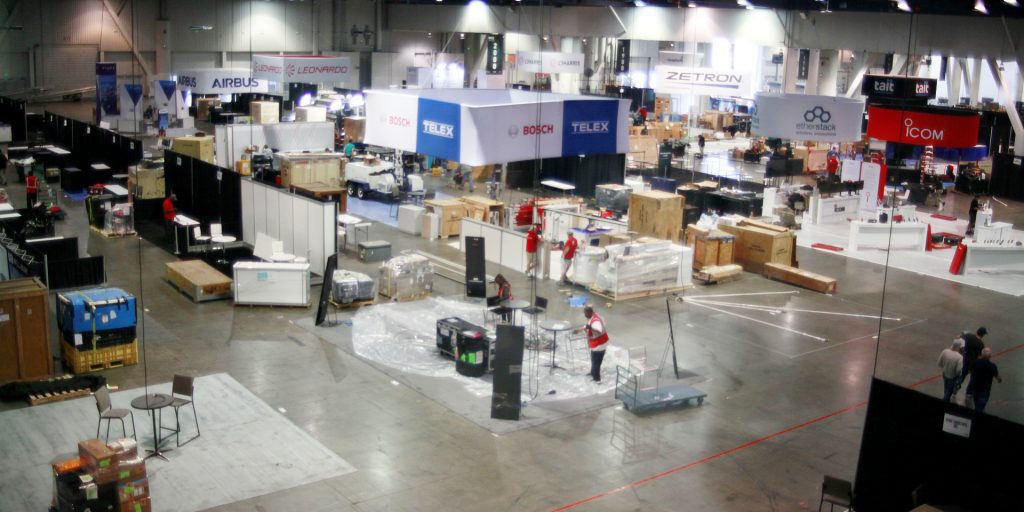IWCE 2022: ‘New and shiny doesn’t necessarily solve the issue’
It’s easy to be enamored by the latest piece of emergency telecommunication technology—like a state-of-the-art drone that can stream video in real time or the latest radio upgrade—but it might not be necessary, according to Dan Nelson, of Alaska Mobile Radio.
“Is the shiniest, best thing really needed? Is it solving a problem?” Nelson asked in a lecture titled “Why do we always blame communications” held at the International Wireless Communications Expo (IWCE) 2022 Monday morning in the Las Vegas Convention Center. IWCE is an expo hosted by Urgent Communications, American City & County’s sister publication and Omdia, which is owned by the same parent company, Informa.
The expo, which runs through Thursday, features the latest in telecommunications technology and features various talks on related subjects, including “DMR Interoperability” by Tom Bohn, “Unifying cyber and physical security for emergency communications centers” by Jeremiah Knowles and Mark Cady, and “Machine engagement in the ECC: 911 virtual assistants through artificial intelligence (AI)” by Terry Burnworth.
Nelson’s talk was well attended by dozens of telecommunication stakeholders.
“New and shiny doesn’t necessarily solve the issue,” he noted. Instead of immediately turning to the latest purchase as a solution to a perceived problem, Nelson said it’s important to return to the basics: Are radios being maintained? Are generators being exercised regularly at the appropriate rate?
Maintenance is a crucial part of daily operations, and the same is true when considering a telecommunication expansion or an investment in new equipment. In part, this is because maintenance isn’t free—it takes manpower and regular funding that lasts long after the shiny has worn off.
Oftentimes, “it’s easier to get one-time funds—especially in the public sector,” Nelson said in stressing the importance of “building maintenance into budgets.”
There’s another reason why maintenance is so important besides saving money. In today’s digital-first environment—in which end users don’t necessarily understand the complexity of the technological infrastructure they’re connected to at any given moment—“there’s an expectation at all levels that this stuff stays up and running,” he continued.
Because of this, along with planning to expend maintenance funds on a regular basis, it’s also important to consider contingency plans when exploring a new technology. If telecommunication infrastructure goes down, are there plans to get it back up and running?
“There are some cases when you’ve just gotta deal with what you’ve got,” he continued, by way of recalling a time while working as an emergency communications center administrator in Alaska when he accidentally left a satellite phone in the car (unsurprisingly, the battery died quickly). And beyond inevitable human error, “Sometime Mother Nature deals you a bad hand. … The batteries are going to fail. It’s going to go out for maintenance”—then what? Nelson asked.
To that end, he laid out an example continuity plan that detailed steps that should be implemented into the purchasing process. This includes steps like continuity planning, taking a business impact analysis, creating recovery strategy, planing development and running exercises.
In this preparation process, make sure to consider every scenario, no matter how unlikely it seems. A system might work like clockwork on a small scale, “But what happens when you need to make it bigger?” he asked. When systems expand, that’s when problems happen, “because we haven’t planned to this level.”
And along with scenarios, make sure the consider the needs of the end user—the firefighter or police officer who will use the piece of technology or implement the action plan on the ground. “If we’re just ‘up here’ at this high level, the user isn’t in the process. Sometimes, we don’t bring the user into the fold,” Nelson said.
When the user is forefront, technology becomes a tool to meet a challenge or address a problem, not an end to itself. Taking this approach can sometimes simplify the issue.
“Is it behavior or is it the technology?” he asked. For decision makers, this might mean taking a ride with a firefighter for a shift or, at the very least, bringing everyone into the same room and allowing the end users to carry the conversation before writing a check.




















